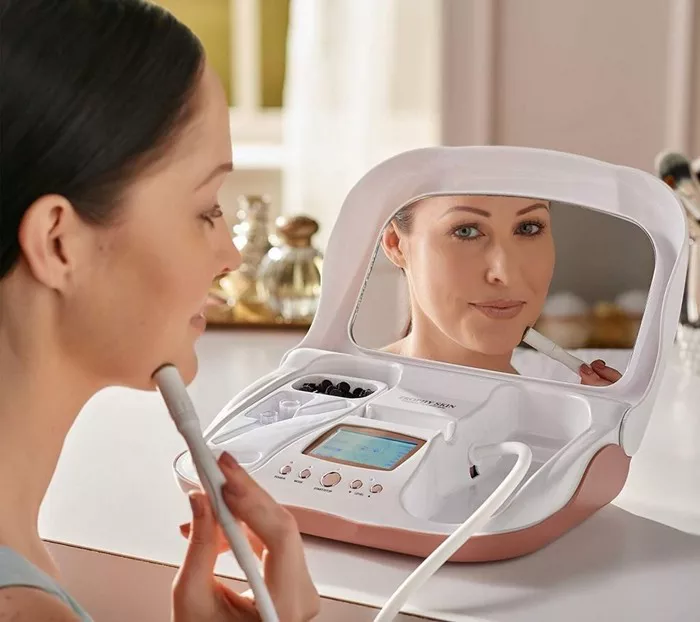Hyperpigmentation is a common skin condition characterized by the darkening or discoloration of certain areas of the skin. It can be caused by various factors, such as sun exposure, hormonal changes, acne, or aging. Many individuals seek professional treatments to reduce the appearance of hyperpigmentation, and one popular option is microdermabrasion. In this article, we will delve into the effectiveness of microdermabrasion for treating hyperpigmentation and discuss the number of treatments typically required for optimal results.
1.Understanding Microdermabrasion
Microdermabrasion is a non-invasive cosmetic procedure that involves exfoliating the outermost layer of the skin using a device that sprays fine crystals or uses a diamond-tipped wand. This process removes dead skin cells and stimulates the production of collagen, promoting skin rejuvenation. Microdermabrasion can help improve the appearance of various skin concerns, including hyperpigmentation.
2.The Benefits of Microdermabrasion for Hyperpigmentation
Microdermabrasion offers several benefits when it comes to treating hyperpigmentation. The exfoliation process helps to slough off the upper layers of the skin, removing excess melanin and revealing fresh, new skin cells. Additionally, microdermabrasion stimulates cell turnover and collagen production, which can help even out skin tone and reduce the appearance of hyperpigmented areas.
Another advantage of microdermabrasion is that it is a gentle procedure suitable for most skin types. It is non-invasive and requires minimal downtime, making it a convenient option for those with busy lifestyles. However, it is important to note that individuals with severe hyperpigmentation or certain skin conditions may require more aggressive treatments or a combination of therapies to achieve optimal results.
3.Determining the Number of Microdermabrasion Treatments
The number of microdermabrasion treatments needed to effectively treat hyperpigmentation can vary depending on various factors, including the severity of the condition, the individual’s skin type, and their response to the treatment. In general, a series of treatments is recommended for the best outcome.
Most skincare professionals suggest a course of six to eight microdermabrasion sessions, spaced two to four weeks apart, to target hyperpigmentation. This spacing allows for the skin to heal and regenerate between treatments. However, it is essential to remember that every individual’s skin is unique, and the number of treatments required may vary.
4.Monitoring Progress and Adjusting Treatment
During the course of microdermabrasion treatments, it is crucial to closely monitor the skin’s response and adjust the treatment plan as needed. Regular assessments by a skincare professional can help determine whether the current regimen is providing the desired results or if any modifications are necessary.
If hyperpigmentation persists after the initial series of treatments, additional sessions may be recommended. In some cases, combining microdermabrasion with other procedures, such as chemical peels or laser therapy, can enhance the overall effectiveness of the treatment and lead to more significant improvements in hyperpigmentation.
5.Post-Treatment Care and Maintenance
Following each microdermabrasion session, proper post-treatment care is essential to maximize the results and maintain the improvements achieved. The skin may be slightly sensitive and prone to sun damage immediately after the procedure, so it is crucial to use a broad-spectrum sunscreen with a high SPF to protect the treated areas.
Additionally, skincare professionals often recommend using gentle, hydrating skincare products that support the skin’s healing process. Avoiding harsh exfoliants or irritants, such as retinol, for a few days after treatment is also advised.
To maintain the results of microdermabrasion and prevent further hyperpigmentation, it is important to follow a consistent skincare routine and protect the skin from excessive sun exposure. Regular use of sunscreen, along with products containing ingredients like vitamin C and niacinamide, can help prevent the formation of new pigmented areas and promote a more even skin tone.
Conclusion
Microdermabrasion is a popular and effective treatment for reducing hyperpigmentation. It offers multiple benefits, including gentle exfoliation, stimulation of collagen production, and improved skin tone. While the number of microdermabrasion treatments required can vary, a series of six to eight sessions is typically recommended for optimal results. Regular monitoring of progress, adjusting the treatment plan as needed, and practicing post-treatment care and maintenance are crucial to achieving long-lasting improvements in hyperpigmentation. Consultation with a skincare professional is advised to determine the most suitable treatment approach based on individual needs and skin conditions.


